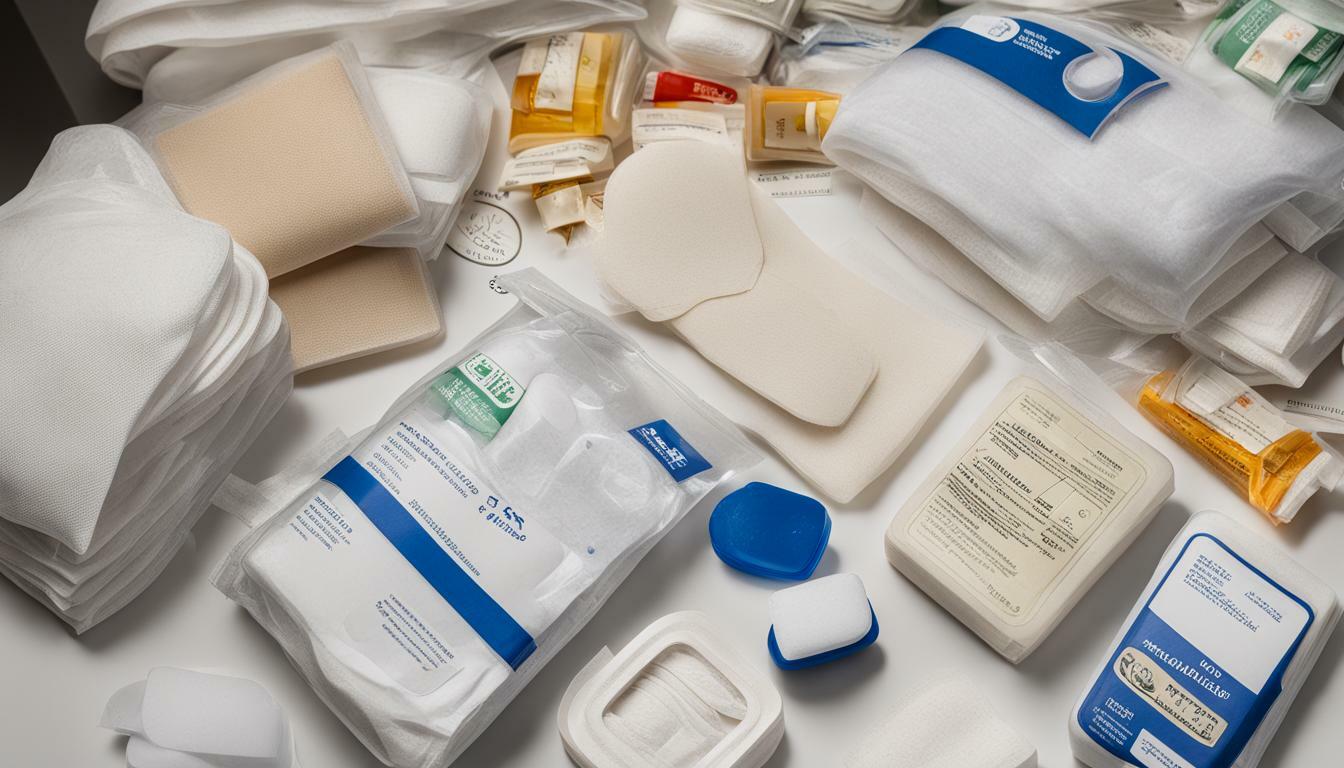A well-stocked and organised first aid kit is essential for any home, workplace, or outdoor activity. In case of an emergency, having the necessary supplies readily available can mean the difference between life and death. Therefore, it is crucial to ensure that your first aid kit is correctly stocked, organised, and maintained at all times.
In this article, we will provide you with valuable tips and guidelines for keeping your first aid kit stocked and organised. We will cover the essential items that should be included in a first aid kit, the importance of regularly checking and restocking supplies, and effective ways to organise and store your kit. By following these tips, you can ensure that you are adequately prepared to respond to any emergency situation.
Understanding First Aid Kit Essentials
A well-stocked first aid kit serves as a crucial resource in emergency situations. It is important to keep your first aid kit updated and organized to ensure that you have immediate access to the necessary supplies. The following are essential items that should be included in your kit:
| Item | Description |
|---|---|
| Bandages | A variety of bandages such as adhesive, gauze, and blister should be included to cover cuts, scrapes, and other wounds. |
| Antiseptics | Antiseptics such as hydrogen peroxide and rubbing alcohol are essential for cleaning wounds and preventing infection. |
| Adhesive tape | Adhesive tape is used to secure dressings and bandages in place. |
| Gloves | Disposable gloves should be included to protect the responder from bloodborne pathogens and other contaminants. |
| Medications | Over-the-counter medications such as pain relievers, antihistamines, and stomach remedies should be included. Prescription medications should be included if necessary. |
It is important to regularly check the expiration dates of items and replace used or expired supplies. A well-stocked and organized first aid kit can provide peace of mind and potentially save lives.

Organising Your First Aid Kit
Organising your first aid kit is a crucial step in ensuring you’re prepared for any emergency. Here are some tips and guidelines to help you keep your first aid kit organised.
Group Items By Category
The first step to organising your first aid kit is to group items by category. This will make it easier to find and access the supplies you need in an emergency. Consider grouping items into categories such as bandages and dressings, antiseptics, medications, and tools such as scissors and tweezers.
Use Clear Storage Containers or Pouches
Using clear storage containers or pouches can help you quickly identify the items you need. This can also help you keep track of your supplies and prevent you from buying duplicates. Consider using ziplock bags or clear plastic containers with dividers to keep your items organised.
Label Each Item for Easy Identification
Labelling each item with its name and purpose can help you quickly identify the supplies you need in an emergency. This can also help others who may need to use your first aid kit. Consider using a label maker or writing on your pouches or containers with a permanent marker.
Regularly Maintain and Declutter
Regular maintenance and decluttering are crucial to keeping your first aid kit organised. It’s important to regularly check your supplies for expiration dates and replace any used or worn-out items. Consider decluttering your kit every six months to ensure you’re only keeping the items you need.
By following these tips, you can keep your first aid kit organised and ensure you’re prepared for any emergency.
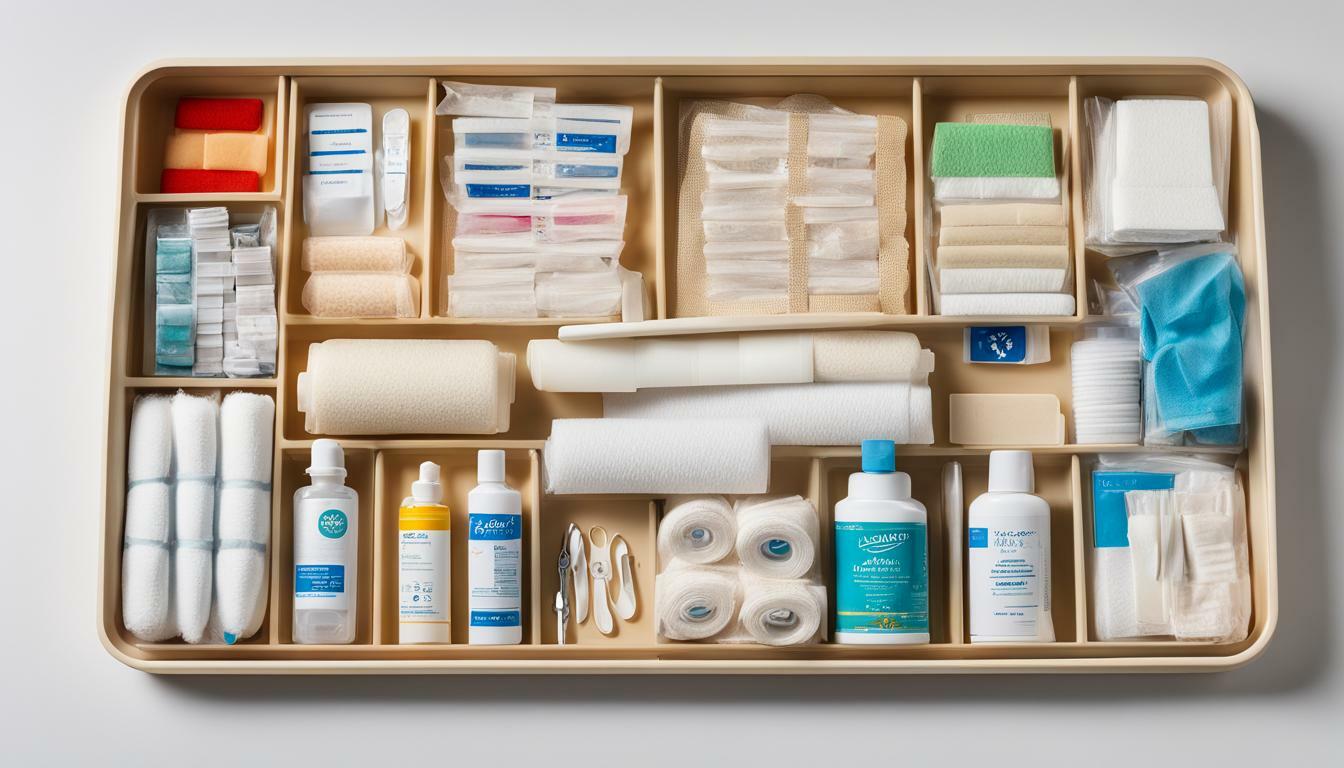
Maintaining a Well-Stocked First Aid Kit
Keeping your first aid kit stocked and organized is crucial for ensuring you are prepared to respond swiftly and efficiently to emergencies. To maintain a well-stocked first aid kit, it is important to follow the best practices for first aid kit maintenance.
Regularly checking and restocking supplies is essential for keeping your first aid kit up-to-date. It is recommended to create an inventory checklist to keep track of what should be in your kit and when to restock. This will not only help you to keep your kit organized but also ensure you have everything you need in case of an emergency.
| Best Practices for First Aid Kit Maintenance |
|---|
| Regularly check and replace expired supplies |
| Create an inventory checklist |
| Keep a record of usage |
| Store your kit in a cool and dry place |
Regularly checking your first aid kit for expired supplies should be a priority. It is recommended to restock items before they expire to ensure your kit is always up-to-date. Creating an inventory checklist will help you stay organized and ensure that you have everything you need. Keeping a record of usage will also help you to identify which supplies are used most frequently and need to be restocked more often.
Storing your first aid kit in a cool and dry place is important for keeping the supplies from deteriorating. Avoid storing your kit in direct sunlight or in areas with extreme temperatures as this can damage the supplies.
By following these best practices for first aid kit maintenance, you can ensure that your kit is always well-stocked and ready to use in case of an emergency.

Restocking Your First Aid Kit
Keeping your first aid kit well-stocked is essential to ensure you are prepared to respond to any emergency situation. However, it can be easy to forget what you need to buy or when to restock. Here are some guidelines for effectively restocking and organizing first aid supplies.
Creating a Restocking Schedule
Creating a restocking schedule is key to ensuring that your first aid kit is always up-to-date. Depending on your usage and specific needs, decide on a restocking frequency that makes sense for you. For instance, if you use supplies from your kit frequently, restocking every month may be necessary. Otherwise, restocking every three to six months should suffice.
Keeping Track of Expiration Dates
It is important to check the expiration dates of your first aid supplies regularly. Most of the supplies have a shelf life of about two to three years, but some items, such as medications, may expire sooner. Create an inventory checklist that includes expiration dates of all items. Make sure to replace any supplies that have expired before they lose their effectiveness.
Purchasing Supplies in Bulk
Bulk purchasing can be an effective way of saving costs while restocking your first aid kit. Consider purchasing items like bandages, gauze, and tape in larger quantities to make the most of discounts and offers.
Organizing First Aid Supplies
When restocking your first aid kit, take the opportunity to organize your supplies. Group items by category, such as wound care, medications, and tools, to make it easier to find what you need in an emergency. Use clear storage containers or pouches to easily identify and access each item. Label each container for quick identification.
Consider Your Personal Needs
Every individual or family has unique needs and circumstances. Take the time to consider what specific items or supplies you may require in your first aid kit. If you or a family member has allergies or chronic conditions, make sure to have sufficient medication and supplies on hand. Consult a medical professional for specific recommendations.
Restocking your first aid kit regularly is crucial to ensure you are prepared for any emergency that arises. Follow these tips to keep your first aid kit well-stocked, organized, and up-to-date.
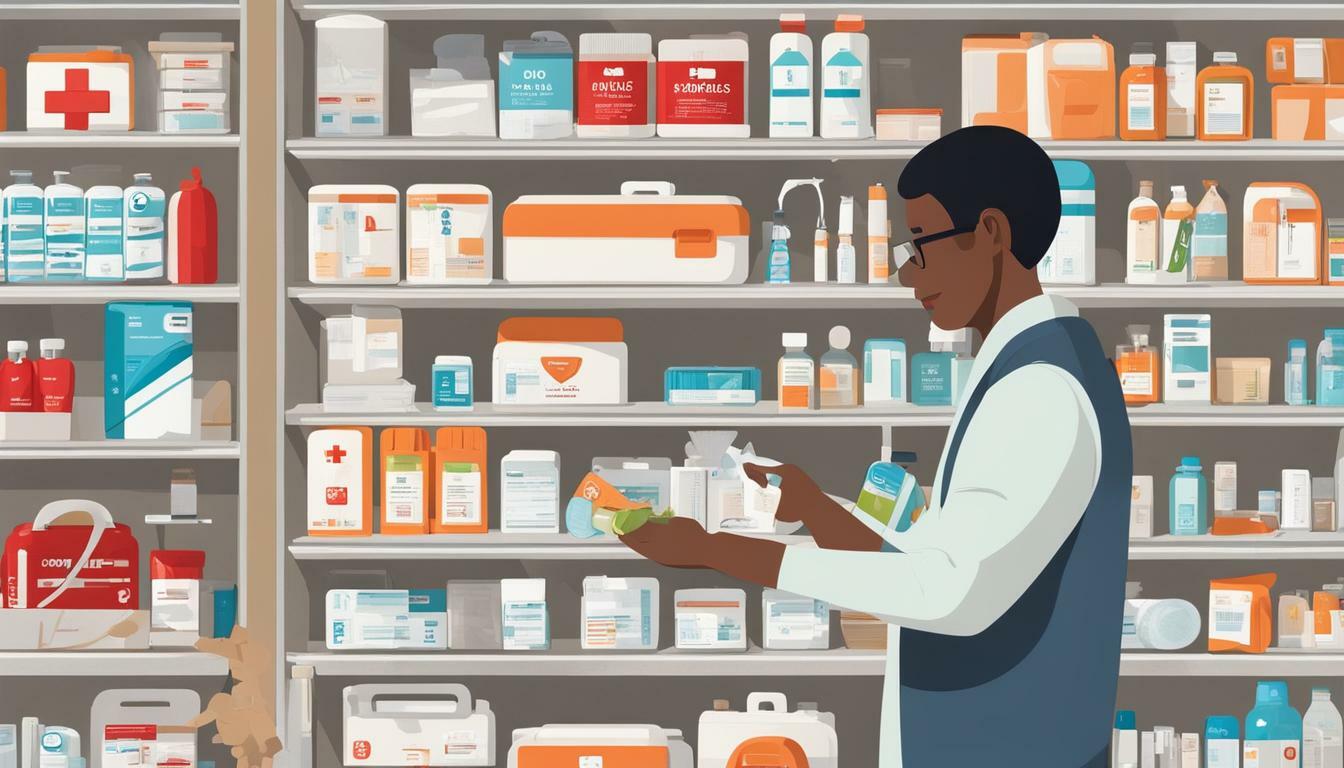
Developing a First Aid Kit Inventory Checklist
Having a well-stocked and organised first aid kit is essential to ensure you are prepared for any emergency situation. However, it’s equally important to maintain a checklist of essential items that should be included in your first aid kit. A comprehensive checklist will help you keep track of necessary items and restock your kit with ease. Here are some tips on how to develop a first aid kit inventory checklist:
1. Determine Your Essential Items
The first step in creating a comprehensive inventory checklist is to determine the essential items that you will need in your first aid kit. This will vary depending on the size of your kit, the number of people it will serve, and any specific needs or requirements.
Some essential items for a first aid kit include:
| Item | Quantity |
|---|---|
| Bandages | Various sizes |
| Gauze pads | Various sizes |
| Adhesive tape | Rolls of various sizes |
| Antiseptics | Alcohol wipes, hydrogen peroxide, antibiotic ointment |
| Medications | Pain relievers, antihistamines, anti-diarrhoeal medication |
| Tools | Scissors, tweezers, thermometer |
| Gloves | Nitrile or latex gloves |
| CPR masks | One per person |
2. Categorise Your Items
Grouping items by category is an effective way to keep your first aid kit organised and easily accessible. For example, you could group bandages and gauze pads together, antiseptics in another section, and medications in a separate pouch. This will make it easier to find what you need in a hurry.
3. Label Your Items
Labelling each item is crucial to ensure that you and others know what each item is and how it should be used. You can use a label maker or write on adhesive tape to identify each item and its purpose.
4. Regularly Review and Update Your Checklist
Keeping your inventory checklist up to date is essential to ensure that you have all the necessary items in your kit and to avoid any items from expiring. Set a monthly reminder to review and update your checklist, restocking and replacing any items that are running low or approaching their expiration date.

A comprehensive inventory checklist will help you to maintain a well-stocked and organised first aid kit. With these tips, you can ensure that you are prepared for any emergency situation, and that your kit is always up to date and fully stocked with essential items.
Storing Your First Aid Kit
Organizing a first aid kit and maintaining a well-stocked first aid kit are essential, but it’s also vital that you store your first aid kit correctly.
It’s crucial to keep your first aid kit in a dry and easily accessible location. When choosing a storage location, be mindful of sunlight and extreme temperatures, which can damage certain supplies. Keep in mind that if stored in a car, the temperature can rise significantly and affect the quality of the supplies.
If possible, try to keep your first aid kit portable. This way, you can quickly grab it and take it with you in case of an emergency. When going on outdoor trips or camping, you can consider using a waterproof and durable container to store your kit.
One way to ensure your first aid kit is easily identifiable is by using clear containers or pouches. Additionally, label each item in your kit, so you can identify everything quickly and efficiently.
Storing your first aid kit correctly is just as important as organizing and maintaining it. By keeping it in an accessible, dry, and cool location, you can ensure that your supplies are ready to use when you need them most.

“Keeping your first aid kit in a dry and cool place is vital to ensure your supplies are ready to use when an emergency arises”
Training and Educating Yourself on First Aid
Having a well-stocked first aid kit is crucial for any household or workplace, but it is equally important to be trained and educated in first aid techniques. Attending first aid courses or workshops can significantly enhance your knowledge and skills in responding to emergencies.
Additionally, familiarizing yourself with the proper use of first aid supplies can increase the effectiveness of your kit. Knowing how to properly administer CPR or use an EpiPen can make all the difference in a life-threatening situation.
Maintaining a well-stocked first aid kit is not enough; it is essential to regularly update your knowledge and skills. Consider attending refresher courses or staying updated on new techniques and advancements in medical supplies to ensure you are equipped to respond swiftly and efficiently to emergencies.
Remember, the goal of a first aid kit is to provide immediate care until medical professionals arrive. By training and educating yourself in first aid techniques, you can help save lives and minimize the impact of injuries or illnesses.
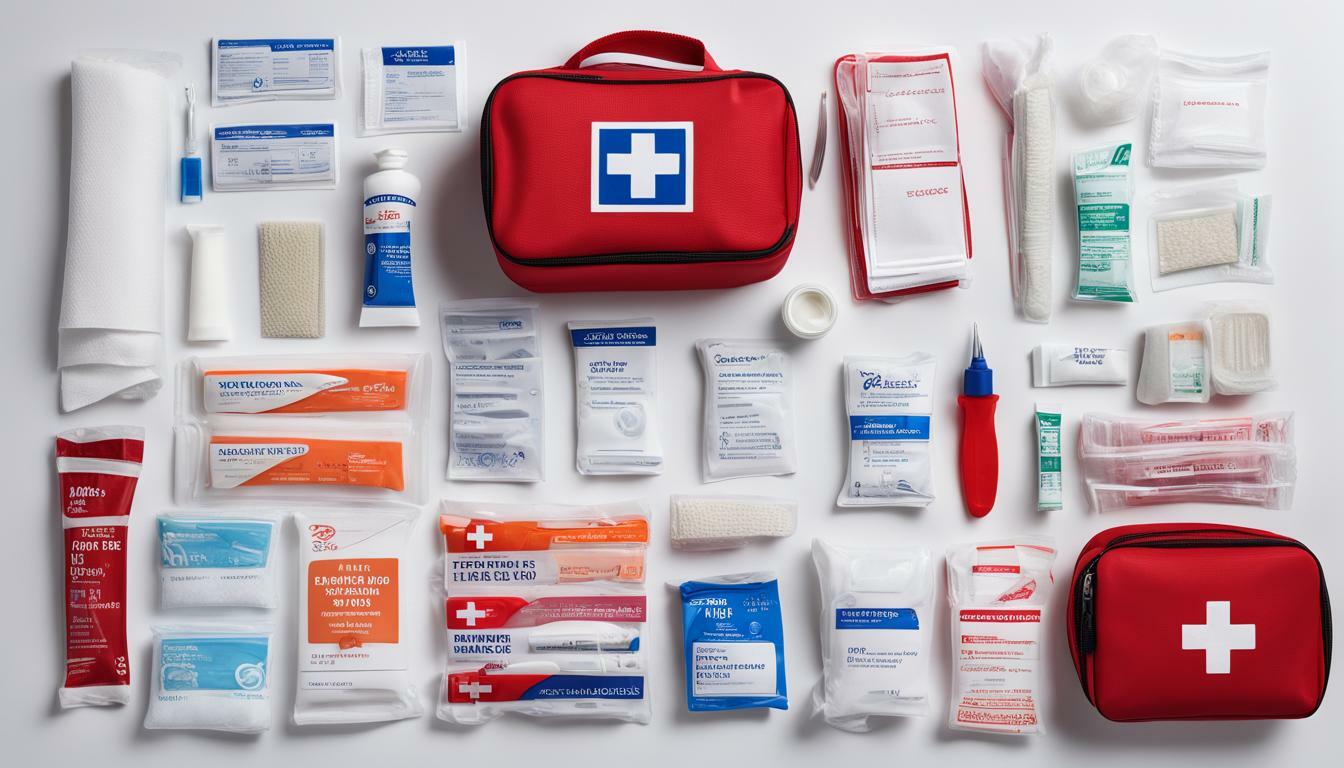
Regularly Reviewing and Upgrading Your Kit
Maintaining a well-stocked and organized first aid kit is an ongoing process that requires regular attention. It’s essential to review your first aid kit regularly to ensure that it’s up to date and still meets your needs.
Organizing first aid supplies is crucial to ensure that you can access the necessary items quickly during an emergency. So, when restocking a first aid kit, it’s essential to keep it well-organized. Take inventory of your supplies and ensure that everything is in its proper place. It’s also vital to declutter your kit regularly by removing expired or damaged items.
When restocking a first aid kit, it’s important to check expiration dates and replace items as needed. It’s also advisable to purchase supplies in bulk to save costs and ensure that you always have enough on hand.
| Tip: | Consider creating a restocking schedule to simplify the process and ensure that you don’t forget any items. Regularly review your inventory checklist and replace any outdated or worn-out items with more effective alternatives. |
|---|
Organizing and maintaining a well-stocked first aid kit is essential to ensure that you’re prepared to respond quickly and effectively during an emergency. So, take the time to review and upgrade your kit regularly. By doing so, you can be assured that you’re ready to handle any situation that may arise.
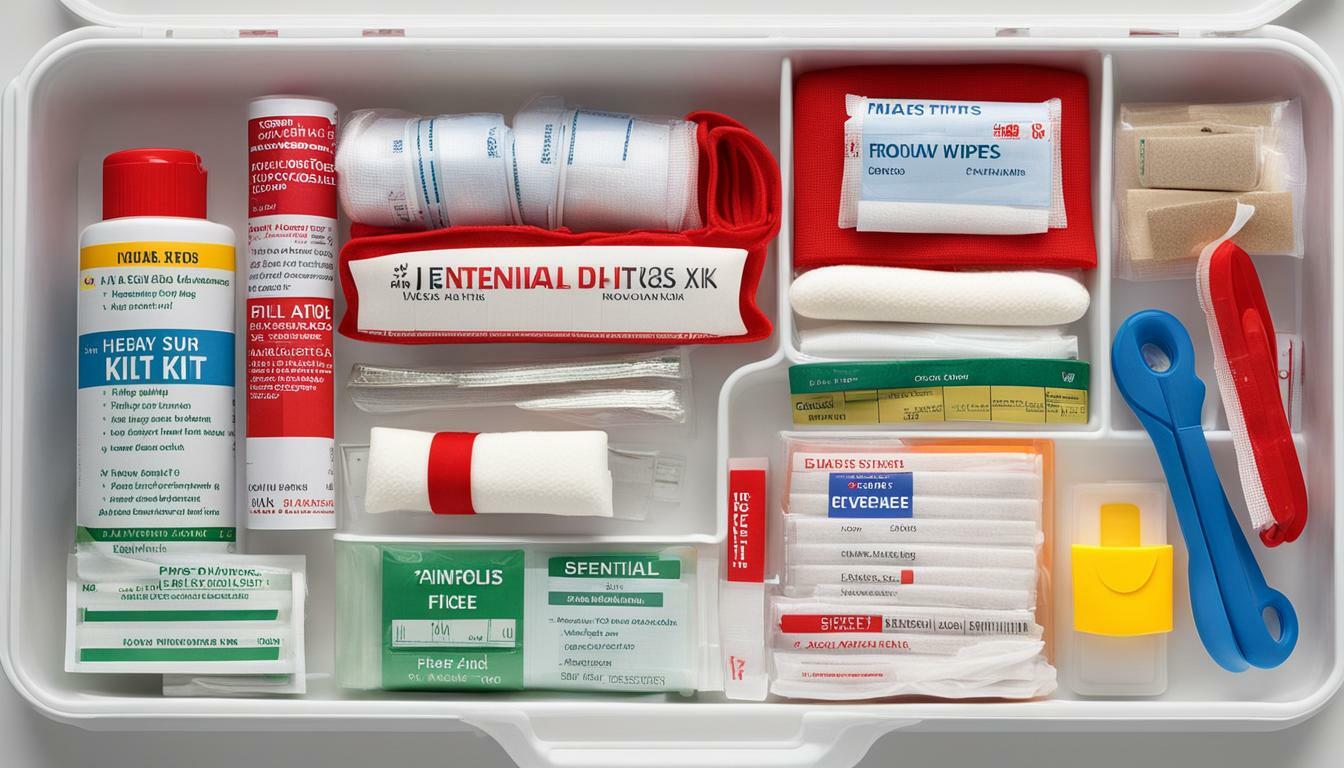
First Aid Kit for Specific Needs
While a basic first aid kit should be able to address most minor injuries and emergencies, it may not be sufficient to meet the specific needs of certain individuals or situations. When putting together a first aid kit, it is important to consider any unique requirements that may exist and tailor the contents accordingly.
If an individual has a chronic medical condition, it may be necessary to include items such as prescription medications, insulin, or inhalers in the first aid kit. It is also important to ensure that any specific medical equipment or supplies are readily available, such as a blood glucose meter or an emergency epinephrine auto-injector (EpiPen) for severe allergies.
Individuals who regularly participate in outdoor activities or sports may also require a first aid kit with specialized contents. For example, a kit designed for hikers may include insect repellent, sunscreen, and blister treatment supplies. Those who participate in water sports may need a waterproof kit with items such as a whistle, a water-resistant flashlight, and a rescue mirror.
When customizing a first aid kit, it is important to consult with medical professionals to ensure that the items included are appropriate and effective. Additionally, it is crucial to regularly review and update the contents to ensure that they remain relevant and useful.

Remember, a well-stocked and organized first aid kit can be a lifesaver in times of emergency. By taking the time to create a kit that meets your specific needs, you can ensure that you are equipped to provide swift and effective first aid when it matters most. Regularly checking and maintaining your kit can also help to ensure that it remains fully stocked and ready for use.
Tips for Keeping a First Aid Kit Stocked and Organised
A well-stocked and organised first aid kit is an essential item to have at home, at work, or while travelling. In an emergency, having quick access to the right supplies can make all the difference in saving lives and preventing further injuries. Here are some tips for keeping your first aid kit stocked and organised:
Understanding First Aid Kit Essentials
The first step in keeping a well-stocked first aid kit is to understand the essential items that should be included. These items include bandages, antiseptics, adhesive tape, gloves, and medications. It is important to regularly check expiration dates and replace used items as needed.
Organising Your First Aid Kit
Organising your first aid kit is crucial for effective and efficient use during emergencies. Grouping items by category, using clear storage containers or pouches, and labeling each item for easy identification are some useful tips for organising your kit. Regular maintenance and decluttering are also important.
Maintaining a Well-Stocked First Aid Kit
Maintaining a well-stocked first aid kit requires regular checking and restocking of supplies. Creating an inventory checklist, keeping a record of usage, and storing the kit in a cool and dry place are some best practices for maintaining a well-stocked first aid kit.
Restocking Your First Aid Kit
Effective restocking involves creating a restocking schedule, tracking expiration dates, and purchasing supplies in bulk to save costs. It is important to consider specific needs and requirements based on personal circumstances.
Developing a First Aid Kit Inventory Checklist
A comprehensive inventory checklist is an important tool for keeping a well-stocked first aid kit. Items such as bandages, gauze pads, scissors, and CPR masks should be included in the checklist. It is important to regularly review and update the checklist.
Storing Your First Aid Kit
Storing your first aid kit in a dry and accessible location away from direct sunlight and extreme temperatures is ideal. Keeping the kit portable and easily identifiable is also important.
Training and Educating Yourself on First Aid
Being trained and educated in first aid techniques is important for effective use of first aid supplies. Attending first aid courses or workshops and familiarising yourself with proper use can make a difference. Regularly updating your knowledge and skills is also important.
Regularly Reviewing and Upgrading Your Kit
Regular review and upgrade of your first aid kit is essential for ensuring you have the most effective supplies. Staying updated on new techniques and advancements in medical supplies and replacing outdated or worn-out items with more effective alternatives are some important tips.
First Aid Kit for Specific Needs
Customising your first aid kit to meet specific needs or circumstances is important. Including items such as prescription medications, EpiPens, or supplies for individuals with chronic conditions or allergies can be life-saving. Consulting medical professionals for specific recommendations is also valuable.
Conclusion
Keeping a well-stocked and organised first aid kit can make all the difference in an emergency. By understanding the essential items, organising and maintaining your kit, and regularly reviewing and upgrading it, you can ensure you are prepared to respond swiftly and efficiently to emergencies.
